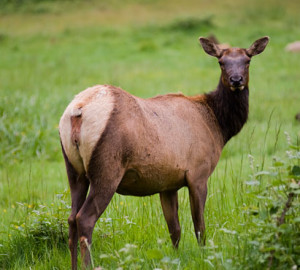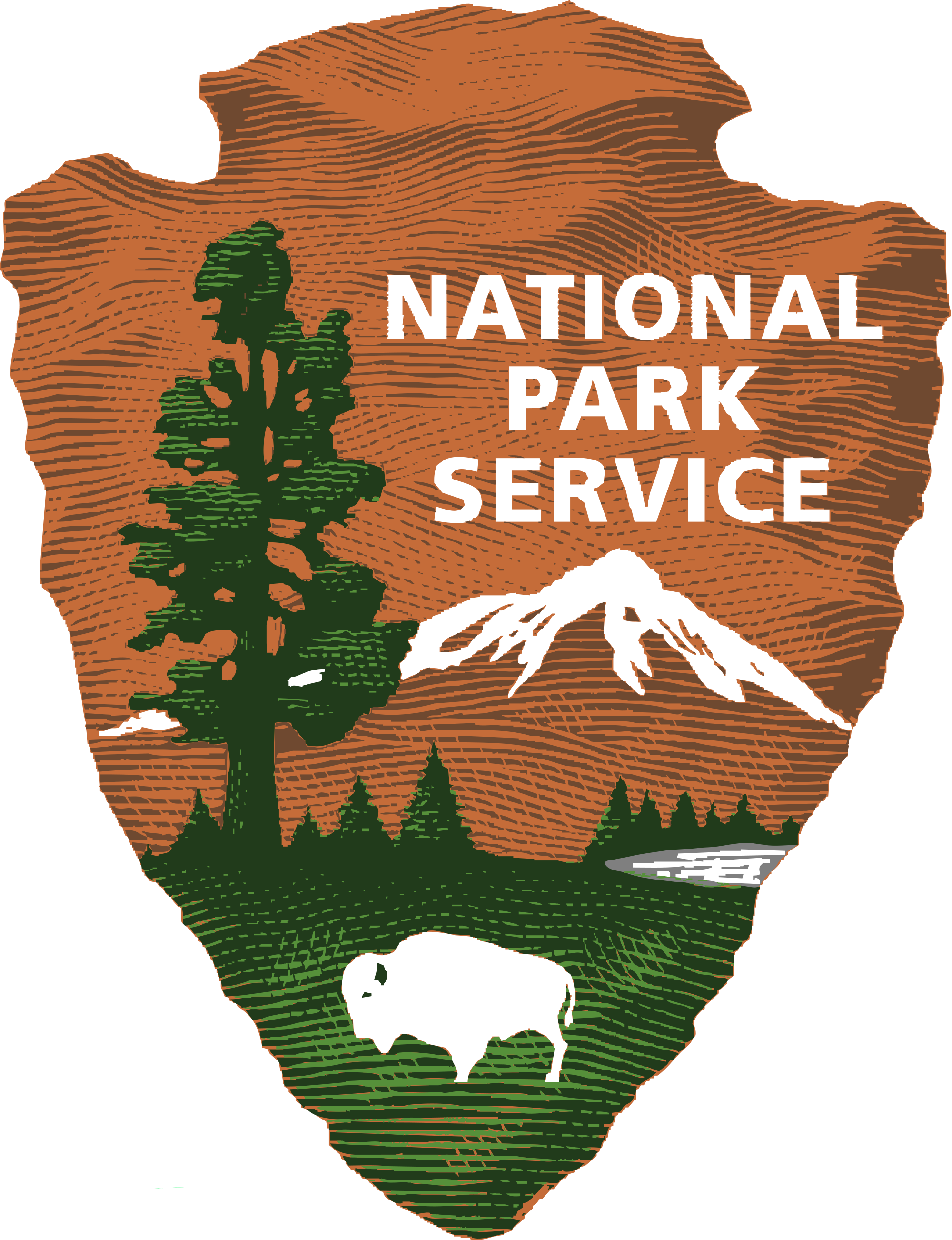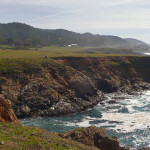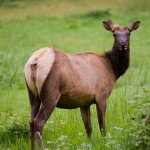
Contacts:
- Mike Kahn | Save the Redwoods League | Cell: (650) 269-1264 | mkahn@SaveTheRedwoods.org
- Jeff Denny | Redwood National Park | Phone: (707) 465-7760 | jeff_denny@nps.gov
Download the full press release
San Francisco, Calif. (April 26, 2017) — Save the Redwoods League (League), the only nonprofit organization in the world dedicated to protecting the redwood forest throughout its natural range, today announced the transfer of the Berry Glen Trail Connection property to Redwood National Park (RNP) on the rugged northern California coast. One mile north of the town of Orick and surrounded by RNP forests, the 5.9-acre property, forested with second-growth redwoods and native brush, sits along a scenic corridor of Highway 101. The property provides wildlife habitat and important trail connections into the park’s two largest ancient redwood groves. The transfer was made possible with $87,000 in federal funding from the Land and Water Conservation Fund (LWCF) that uses offshore oil and gas lease revenues, not tax dollars, and applies them to environmental conservation.
The Berry Glen Trail Connection property was a priority acquisition for the League and the National Park Service as part of ongoing collaborative work to fully protect the Prairie Creek Scenic Corridor. This corridor serves as the public’s gateway to Redwood National and State Parks (RNSP) from the south and contains a long and narrow stretch of privately held lands surrounded by park lands. This has made the corridor a high priority for acquisition to create seamless protected lands along Prairie Creek, restoring the area for its long-term ecological and recreational benefits.
The undeveloped Berry Glen Trail Connection property represents another significant step forward in closing the gap in protected lands in the Prairie Creek Scenic Corridor. The property was purchased by the League from private landowner, Carole Hurst, in 2015, thanks to strong donor support. It now joins the 2.5-acre Prairie Creek Tract property, approximately one mile north in the corridor, as a new addition to RNP. The Prairie Creek Tract was purchased by the League in May 2011 and transferred to RNP in April 2016, also thanks to LWCF funds. Another significant acquisition to close the conservation gap in the scenic corridor was the League’s 2013 purchase of the 125-acre Orick Mill Site, just to the south of the Berry Glen Trail Connection property.
“It’s an honor to be a part of the permanent protection of the Berry Glen Trail Connection property and its inclusion within Redwood National Park,” said Sam Hodder, League President and Chief Executive Officer. “Not only does this project help ensure the health and vitality of the forest and its habitat for fish and wildlife in the Prairie Creek Scenic Corridor, but it also protects public access in the park and prevents development in the heart of this UNESCO World Heritage site. It’s a wonderful thing to work with our park partners, with the support of the League’s donors and LWCF, to protect this place for future generations of people and wildlife.”
A one-acre wetland marsh on the property adds to the limited habitat used by herds of Roosevelt elk, which draw thousands of tourists and photographers each year. And protection of a tributary of Prairie Creek that flows through the property supports fish populations.
Hikers benefit from the property’s intersection of favorite trails. The Berry Glen Trail crosses here, connecting the Lady Bird Johnson Grove and the Lost Man Creek Trail to trails within Prairie Creek Redwoods State Park. Protecting the property ensures legal trail access, as previous access was by informal approval of the landowner and would have been at risk of being revoked if a future landowner did not allow park access through their property.
“It’s great to work with Save the Redwoods League on protecting the forests where the tallest trees in the world live,” said David Roemer, Acting Superintendent of Redwood National Park. “It takes years and years of hard, collaborative work for these specific projects to come to fruition, so taking ownership of the Berry Glen property is truly a special occasion.”
In the past two years, the League, in coordination with RNP, undertook important restoration work on the Berry Glen Trail Connection property before it could be approved for transfer to the park. Ensuring a landscape that’s safe for wildlife and visitors alike is a continued focus of the League’s ongoing stewardship efforts.
RNSP is home to 45 percent of the world’s remaining old-growth redwood forest and the tallest trees in the world. There you’ll find healthy populations of Roosevelt elk, black bears, bobcats, mountain lions, as well as threatened northern spotted owls and marbled murrelets.
Save the Redwoods League continues to raise funds and undertake restoration projects as part of the Prairie Creek Scenic Corridor project to help RNSP ensure that this area is fully protected and becomes a spectacular gateway for visitors to the majestic redwoods of the North Coast.

Walk through a redwood forest — home of the tallest, largest, and some of the oldest living beings on Earth — and you can’t help but feel an overwhelming sense of awe and peace among these magnificent giants. Since 1918, Save the Redwoods League has led the effort to protect the coast redwoods and giant sequoias for all to experience and enjoy. The League has protected nearly 200,000 acres of redwood forest and associated land. For more information, please visit SaveTheRedwoods.org, or to sign up for updates, please visit SaveTheRedwoods.org/signup.

Redwood National and State Parks protect nearly half of the world’s remaining old-growth redwood forest, including some of the oldest and tallest trees in the world. These forests and associated ecosystems provide an important refuge for a diverse community of plants and animals. The park also contains 37 miles of coastline, some of the most important rivers and stream habitat in the region, and outstanding prairies and oak woodlands. These lands are the ancestral home of the Chilula, Hupa, Tolowa, and Yurok people who rely on the landscape and its resources. Since 1994, the National Park Service and California Department of Parks and Recreation have jointly managed the nearly 132,000 acres of Redwood National and State Parks under a cooperative management agreement. These parks were designated as World Heritage Site in 1980.
Tags: 2017, Land and Water Conservation Fund, LWCF, Prairie Creek, Prairie Creek Scenic Corridor, Press Release, Redwood National and State Parks, RNSP, trail connections

